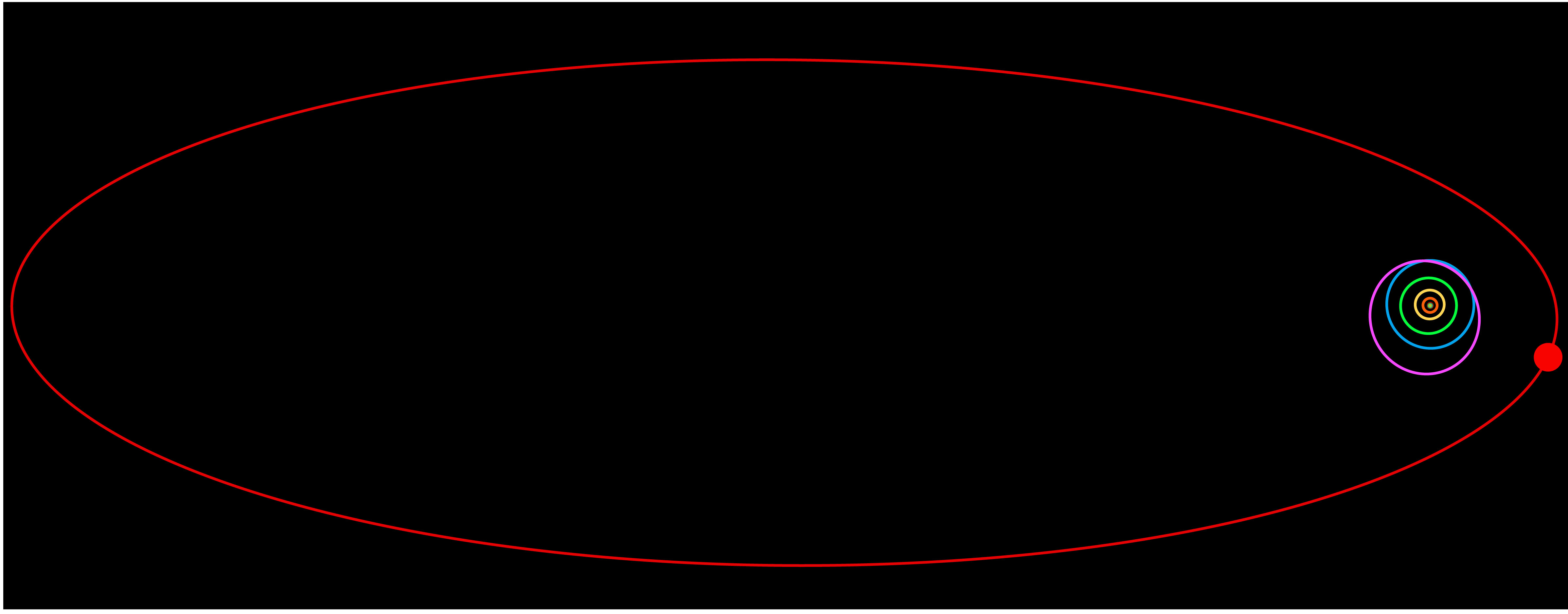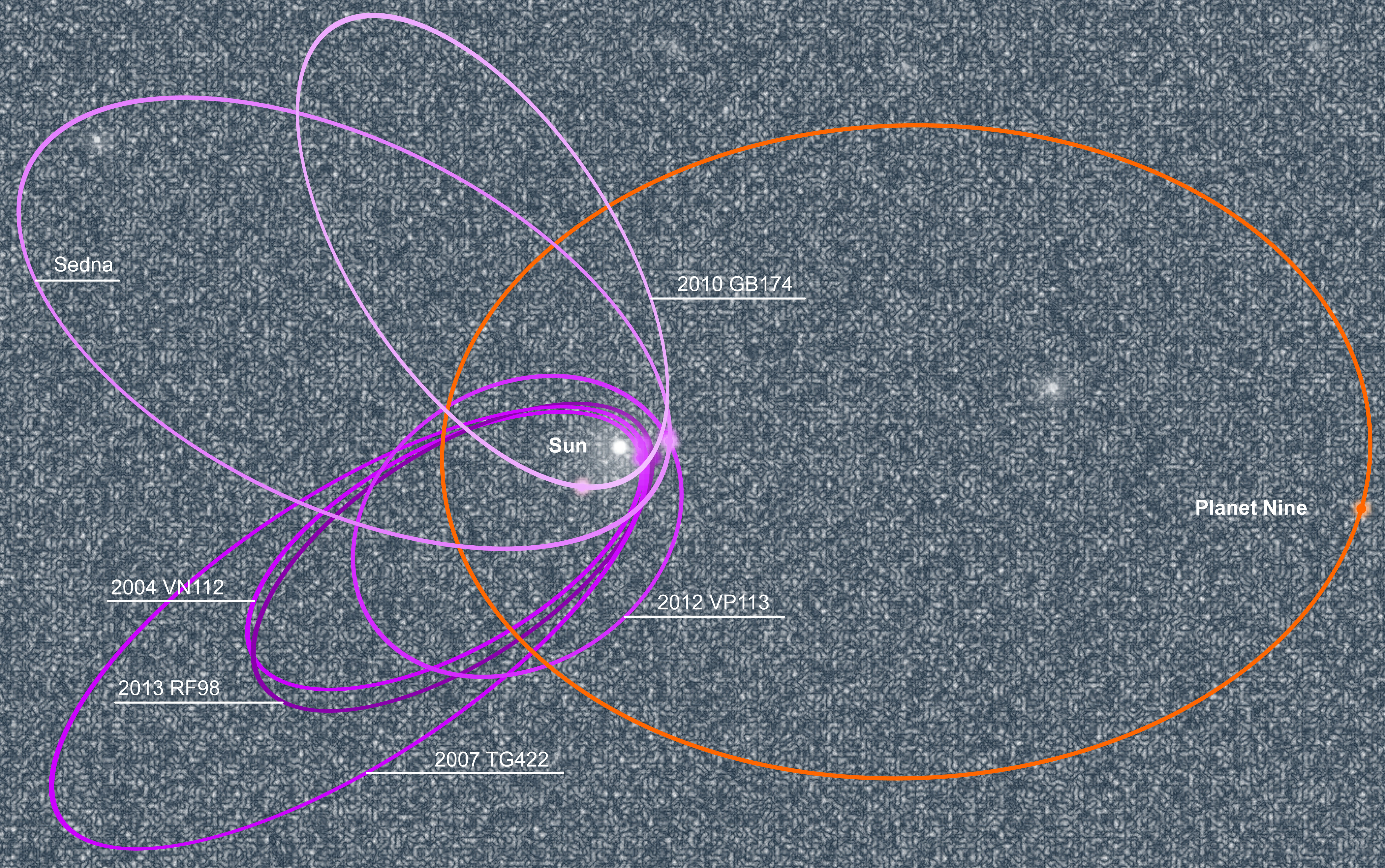6.5: Beyond the Kuiper Belt.
( \newcommand{\kernel}{\mathrm{null}\,}\)
Recently, astronomers have discovered some dwarf planets on highly eccentric orbits beyond the Kuiper Belt. For example, astronomers discovered Sedna in 2003. Sedna has a wildly eccentric orbit that varies from 76 AU at perihelion only to swing out to 936 AU at aphelion. More recently, astronomers discovered another icy body in October of 2018, which they nicknamed “the Goblin.” Its orbital varies even more that Sedna’s, coming closest to the Sun at 65 AU at perihelion only to swing out to 2300 AU during aphelion.
These newly discovered bodies not only have high eccentricity, they also have extreme orbital tilts that seem to point in the same general direction. This has led many astronomers to conclude that their orbits are being shepherded by a large, unknown planet. According to their calculations, this mysterious “Planet 9” would be a Jovian world smaller than Neptune orbiting in an eccentric orbit beyond the Kuiper Belt. It likely formed closer in but was ejected past the Kuiper Belt by gravitational encounters with the other four Jovian worlds. Astronomers have a general idea where Planet 9 might be, but so far, they have not been able to spot it. Until an actual sighting of Planet 9 or some other explanation for the eccentric and tilted orbits of bodies like Sedna and the Goblin is found, the reasons for these anomalies remains a mystery.
 Sedna orbit.
Sedna orbit.
 Planet Nine may occupy an orbit far from the other planets.
Planet Nine may occupy an orbit far from the other planets.



